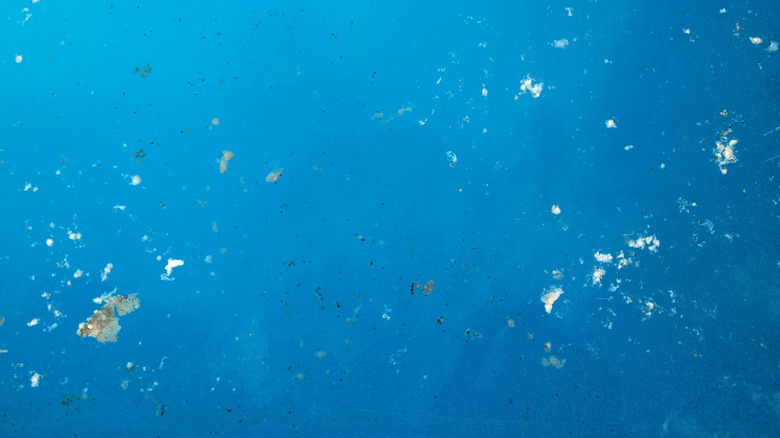Clear Signs Of White Water Mold In Your Pool
When jumping into your pool for a quick swim, you might be surprised to see what looks like pieces of tissues floating in the water. Chances are, someone didn't throw a handful of toilet paper in the pool; what you're seeing is white water mold. It's a natural fungus that can occur in swimming pools, appearing as if shreds of paper or, even grosser, clumps of mucus. These are highly visible signs of this fungus, and other indicators can include cloudy pool water as well residue present on the surface or equipment.
The appearance of white water mold is a dire sign your pool needs cleaning. Although it's non-pathogenic and not dangerous to humans, it can make the pool uninviting. In addition, the fungus often clogs pool equipment as it gravitates to its preferred surfaces: items made of PVC and plastics. The blocked devices can result in reduced water circulation and encourage the proliferation of algae blooms. It may also cause a reaction in mold-sensitive individuals. If you're concerned about the quality of your water pool, be on the lookout for these signs of white water mold.
Identifying white water mold in your pool
The tissue-paper appearance of this fungus is just of the tell-tale signs of its presence. It may appear floating on the water's surface, but can also be under the water or on pool walls. While it's named white water mold, it can also appear in shades of grey. You may observe the fungus floating in streaks, or as a hazy, cloudy formation in the water. When on your pool's filtration system and other apparatuses, it appears like a white film.
Once you know it's present, it's crucial you get rid of white water mold as soon as possible, otherwise, it can contribute to worsening conditions in your pool. First, clean your pool filter so it doesn't continue circulating the fungus throughout your pool. Depending on your filter type, you'll either do this by backwashing for sand filters or using a chemical cleaner for cartridges. After you complete the cleaning, test your water chemistry, then balance the water. Afterward, you'll need to strongly shock your pool, preferably at night so your pool isn't exposed to sun. After shocking, keep the pump running continuously for 72 hours. Follow this up by skimming and brushing the pool to remove the mold, plus cleaning the equipment. Run the pump again to eliminate everything you scraped away, and clean the filter, then repeat the process, testing the water when done.

